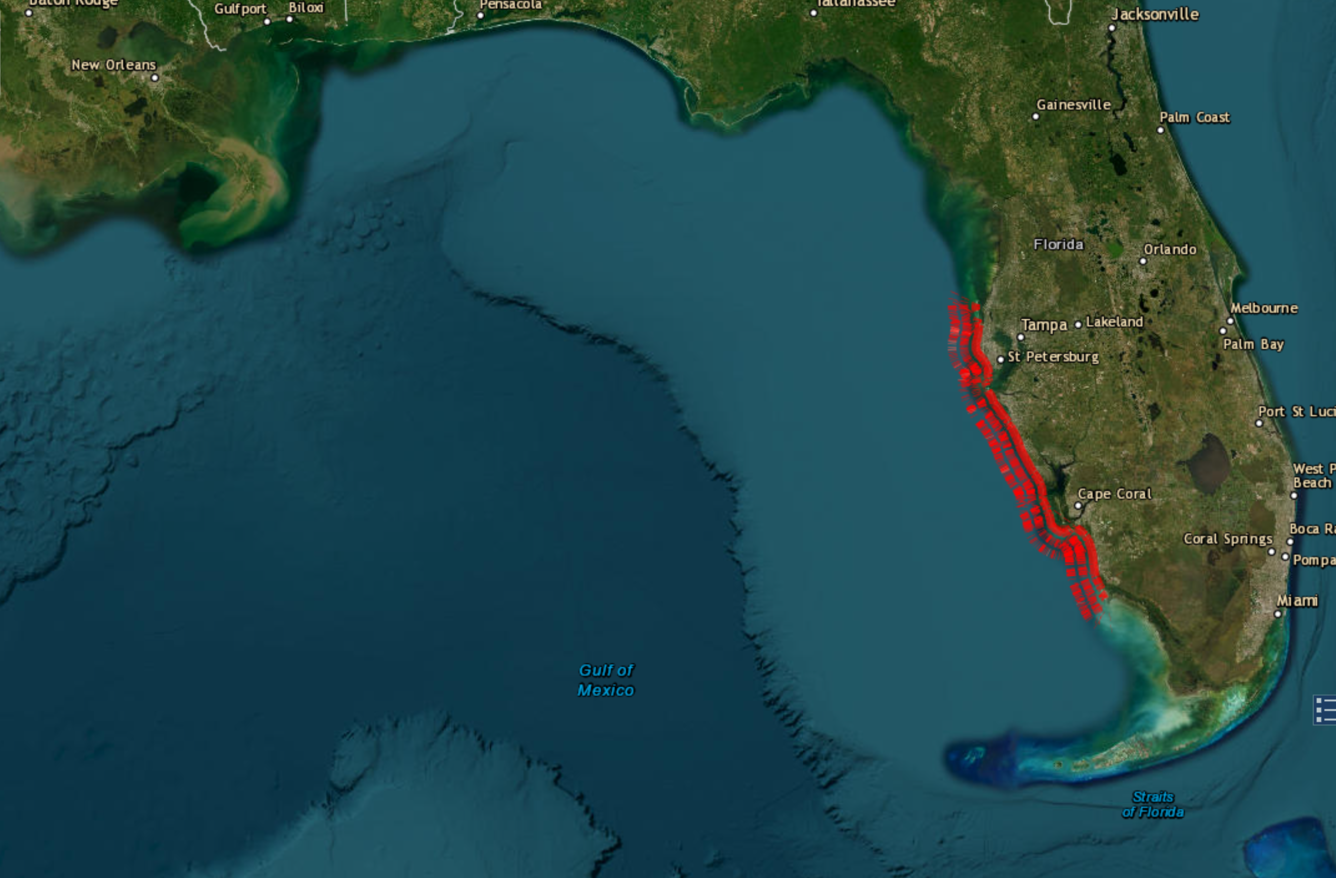With Hurricane Milton making landfall in Florida on Wednesday night, officials have warned that the monstrous storm is set to bring significant change to the state’s coastline.
By generating strong winds and changes in pressure over the sea, hurricanes can push large amounts of seawater toward the shore, known as a storm surge. The intense winds of a storm can be extremely dangerous, but the abnormal rise of seawater across the land is responsible for the majority of hurricane-related deaths, especially in low-lying areas.
Such storm surges can also leave a lasting impact on the coast’s geography. The US Geological Survey (USGS) recently forecasted that 95 percent of the sandy beaches along Florida’s west coast will be continuously submerged by ocean water while Hurricane Milton wreaks havoc.
This will bring the most extreme form of coastal changes as it could cause flooding behind the sand dunes, impacting nearby communities.
Furthermore, the USGS estimates that 100 percent of ocean-facing beaches in Florida will experience some degree of erosion and overwash during and after the wrath of Milton. Overwash occurs when water rises higher than the dunes, pushing sand inland. The process can dramatically reshape the coastal areas, block roads, and degrade protective dunes, making these areas more vulnerable to future storms.

Screenshot of the USGS Coastal Changes Hazards Portal, showing the forecasted coastal change along Florida’s Western coast on 10/7/2024
Image credit: USGS (Public Domain)
The insights about Hurricane Milton come after the Southeastern US was struck by Hurricane Helene just a couple of weeks ago in late September. Off the back of this Category 4 major hurricane – the deadliest to hit mainland US since Katrina in 2005 – Florida’s coastlines will be even more vulnerable to change than usual.
“The significance of the coastal change forecast for Milton’s impact to the Florida west coast cannot be overstated as I believe communities are more vulnerable to this storm’s impacts due to the erosion that occurred recently from Helene,” Kara Doran, a USGS supervisory physical scientist who works on the coastal change forecast, said in a statement.
“Our initial analysis looking at imagery collected by the National Oceanic and Atmospheric Administration after Helene shows most of the west coast experienced overwash or inundation and complete erosion of dunes, so those protective dunes are no longer in place for many locations.”
Past hurricanes have clearly shown how powerful storms can drastically alter the coastal landscape. In 2005, Hurricane Katrina – one of the most significant natural disasters in the US – caused widespread erosion along the Louisiana coastline, eliminating entire barrier islands and wetlands. The Chandeleur Islands, a 64-kilometer (40-mile) long chain of uninhabited barrier islands southeast of New Orleans, were almost completely wiped out by the storm.
While Hurricane Milton is a very different storm to Katrina and it’s too early to see exactly how it will pan out, we can expect the coastline of Florida to be a different place after the tempest subsides.
Source Link: Florida's Coastline Won't Look The Same After Hurricane Milton's Wrath, Experts Say